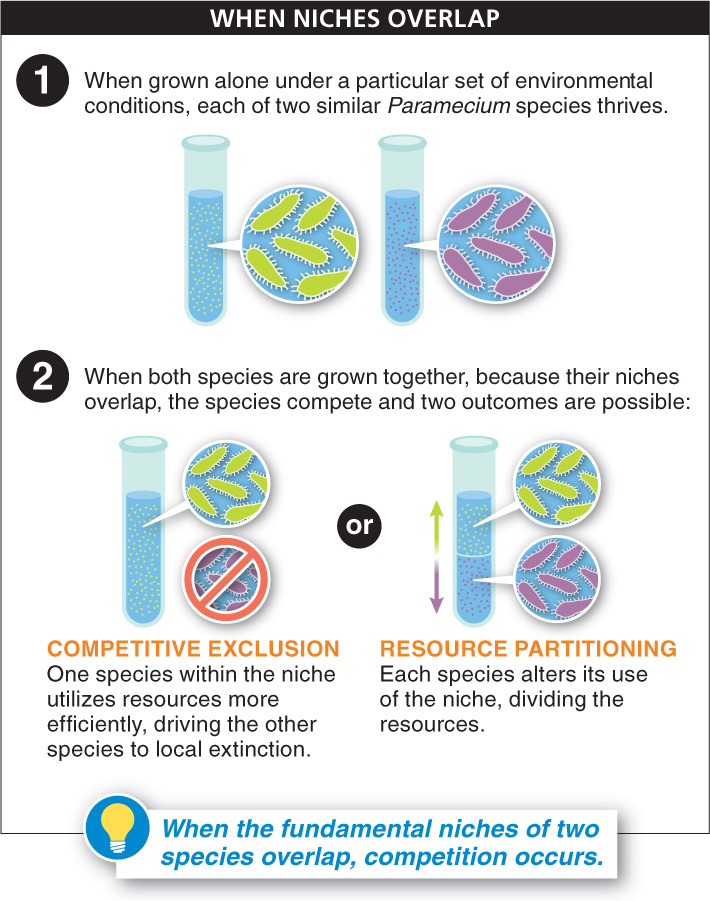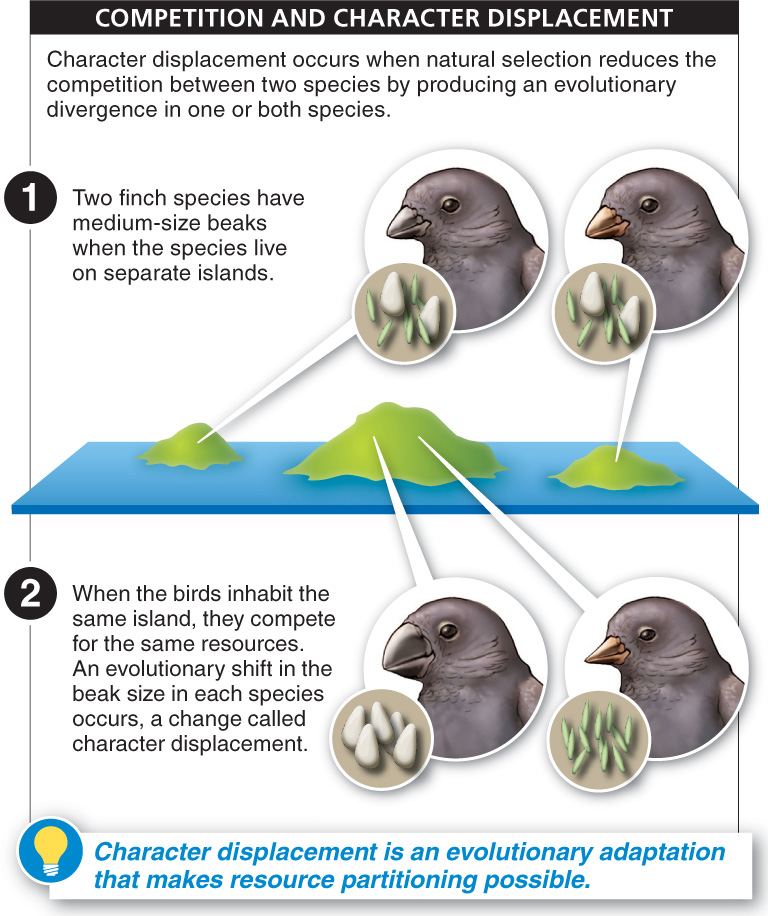Interacting species’ agendas are not always aligned, as they are for plants and their pollinators. Often, species interact because both are trying to exploit the same resources. In such cases—

1. In competitive exclusion, two species battle for resources in the same niche until the more efficient one wins and the other species is driven to extinction in that location (“local extinction”). In the 1930s, this was demonstrated in simple laboratory experiments using Paramecium, a single-
2. Resource partitioning is an alternative outcome of niche overlap. Individual organisms and species can adapt to changing environmental conditions, and resource partitioning can result from an organism’s behavioral change or a change in its structure. When this occurs, one or both species become restricted in some aspect of their niche, dividing the resource. In other experiments with Paramecium, for example, researchers used one of the two species from the initial experiment and a new, third species. Again, each species thrived when grown alone. But when the two species were grown together in the same test tube, they ended up dividing the test tube “habitat.” One species fed exclusively at the bottom of the test tube, and the other fed only at the top. Simple behavioral change made coexistence possible.
In many situations, resource partitioning is accompanied by character displacement, an evolutionary divergence in one or both of the species that leads to a partitioning of the niche. A clear example occurs in two species of seed-

Competition between species has one very odd feature: it is hard to actually see it happening because it causes itself to disappear. After only a short period of competition, one of the species becomes locally extinct or leaves the area where the niches overlap, or character displacement occurs, largely reducing the competition. In either case, the net result is that the level of competition is significantly reduced or wiped out altogether. For this reason, biologists often have to look for character displacement—
631
Biologists do have the opportunity to see competition in occasional natural experiments in which a new species is introduced to a community. For example, the American mink, a weasel-
TAKE-HOME MESSAGE 15.11
Populations with completely overlapping niches cannot coexist forever. Competition for resources occurs until one or both species evolve in ways that reduce the competition, through character displacement, or until one species becomes extinct in that location.
Use the competitive sports terms of “win,” “lose,” and “tie” along with biological terms from this section to describe possible outcomes when two related species have completely overlapping niches.
With competitive exclusion, one species will “win” whereas the other species will “lose” by being driven to extinction in that location. In resource partitioning, the two species can “tie” by altering their use of the niche, dividing the available resources.